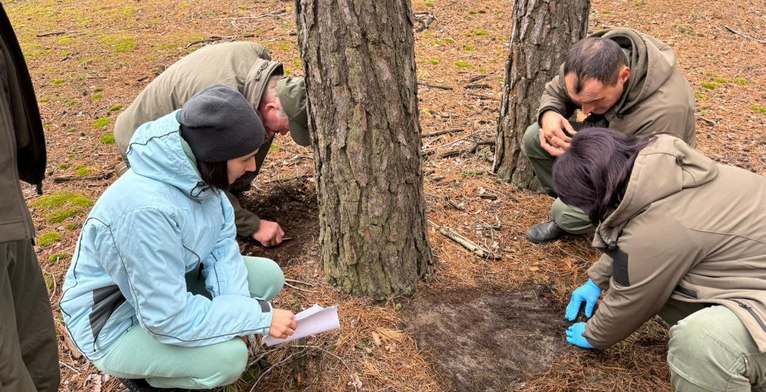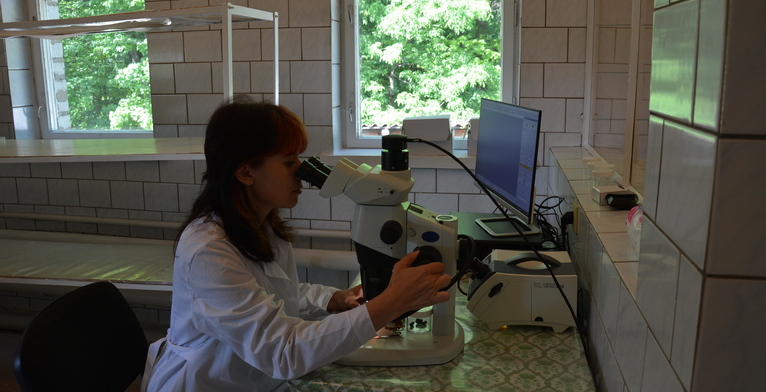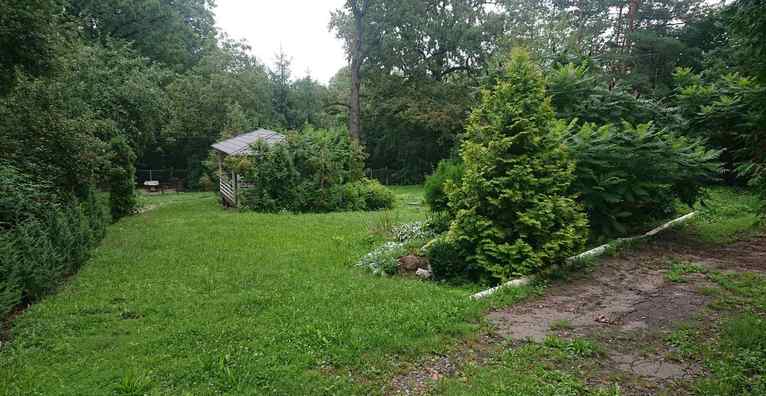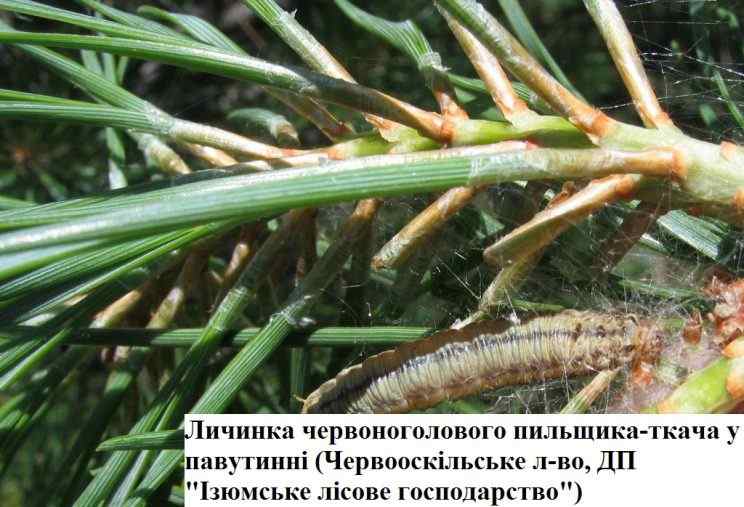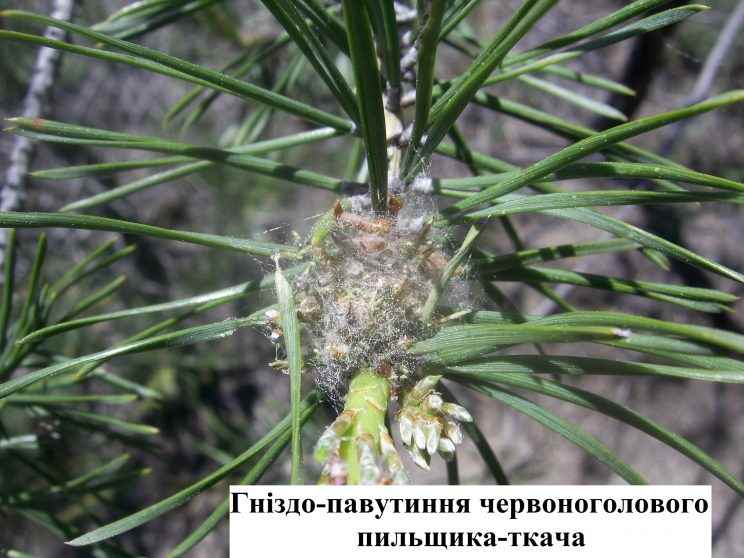In recent years, sawfly larvae have caused significant damage to pine plantations in eastern Ukraine. The growth conditions of Scots pine in the Steppe region weaken the overall physiological state of pine forests, making them more susceptible to needle-eating insects. The red-headed sawfly (RHS) is considered one of the most dangerous species among them.
Forest Pest Control
Between May 18 and 25, 2016, specialists from the Monitoring and Forecasting Department of the Kharkiv Forest Protection Enterprise carried out protective measures in mass outbreak areas of the red pine sawfly (Neodiprion sertifer Geoffr) in the Balakliya and Vysokobir forestry districts, as well as the red-headed sawfly (Acantholyda erythrocephala L.) in the Chervonooskil forestry district.
Protective measures were conducted using aerosol technology GARD-MN and synthetic pyrethroid chemical preparations "Fastak" 10% EC and "Bliskavka" 10% EC.
One of the challenges in controlling sawflies is their unique development pattern: immediately after hatching, larvae form webs that prevent chemical penetration. Currently, an effective method is treatment with diesel fuel as a carrier liquid. The aerosol film of diesel fuel and chemicals blocks oxygen access to the larvae, forcing them to leave the webbing and consume treated needles, leading to their elimination.




